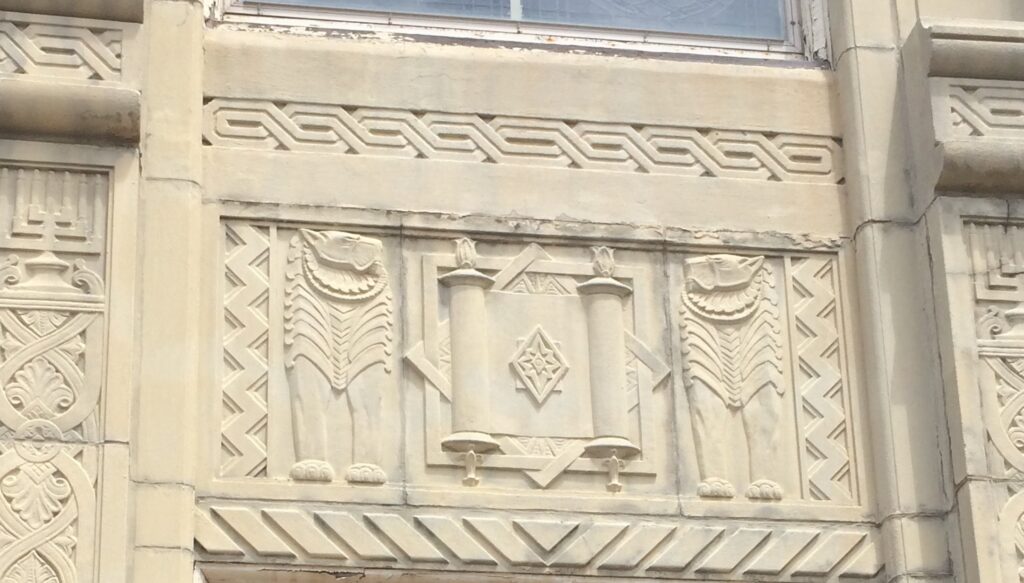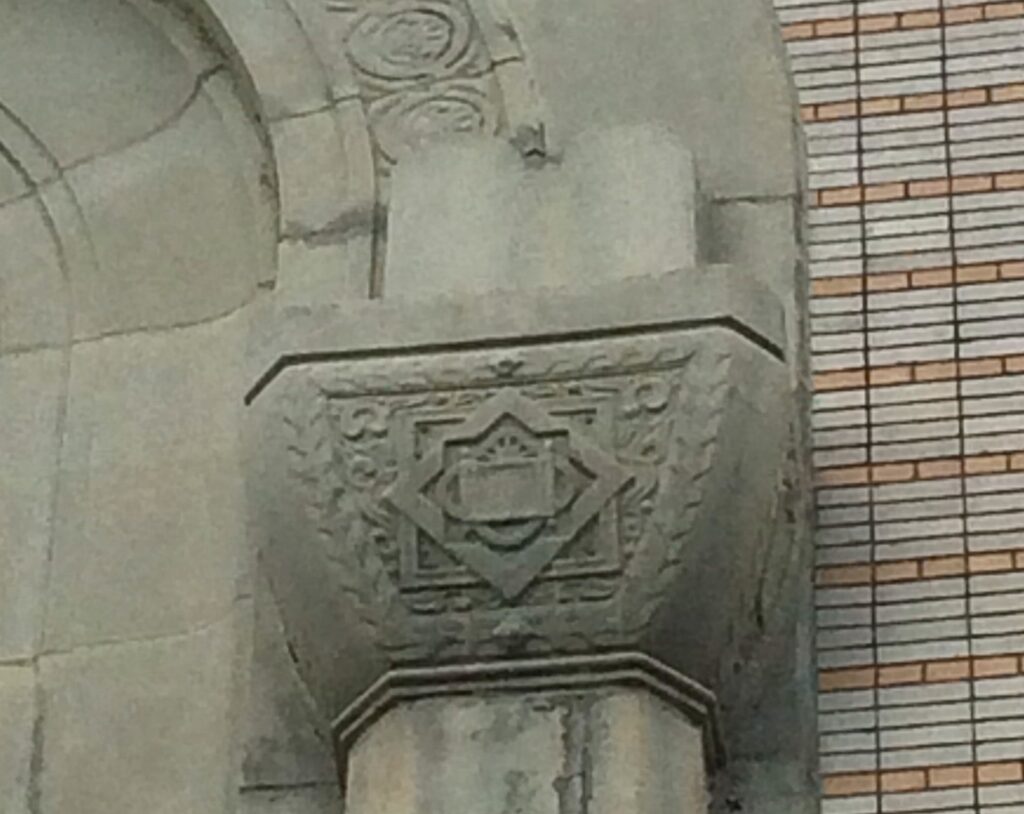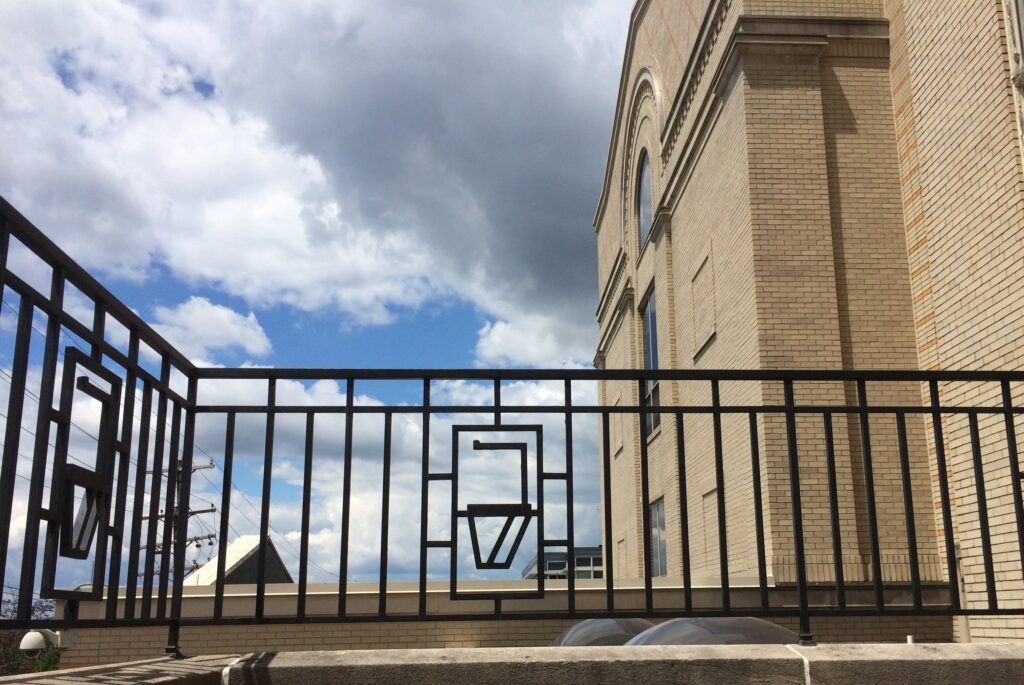A while back a congregant who is a member of the Casar family dropped us a note asking about Beth Shalom architect Alexander Sharove’s description of the façade of the building, published in The Jewish Criterion on July 24, 1931. The architect said this about the design:
The exterior is constructed of two-toned, cream colored brick trimmed with stone. The carving on the stone work has followed Jewish tradition in conception. Palestinian foliage, fruits, an overdoor composition of lions and the open scroll for a “Casar Torah,” and the Harp of David all having been conventionalized and used.

Having now consulted a couple local experts, the sentiment prevailing is that “Casar” is an alternative spelling of “Kesser Torah,” “Torah Crown.” (Congregation Kether Torah in Pittsburgh was originally incorporated as Kaiser Torah, so it is not so far-fetched.)
This led us to take a look at the front of the building, which of course is difficult to see nowadays due to the patio being blocked off as a hazard until the porch area can be majorly repaired. Above is a photo of the wall ornament over each bronze door - the Zigzag Moderne stylized scroll and lions.
We note that the only crown we find is a stylized sunburst above the scrolls at the tops of the columns, not on the “overdoor.” See the photo to the right. Maybe the scrolls themselves are considered the “crowns”?

Alexander Sharove was apparently quite proud of the fruits of his research and labor both inside and outside Beth Shalom. He wrote in flowery terms about the whole building. He had previously assisted on the architecture of B’nai Israel in East Liberty, Poale Zedeck, and Tree of Life’s building in Oakland which would become the Pittsburgh Playhouse, and the construction of the Altoona Synagogue.
Leadership of Beth Shalom was apparently quite pleased with his knowledge and its application. President at the time was M. L. Avner, and the Rabbi was Goodman A. Rose. More about the history of the construction to come in future columns.
Meanwhile, one thing we can see from the street level is the ironwork on the railing and windows around the patio, which contains menorahs and a stylized bet shin, for “Beth Shalom.”
